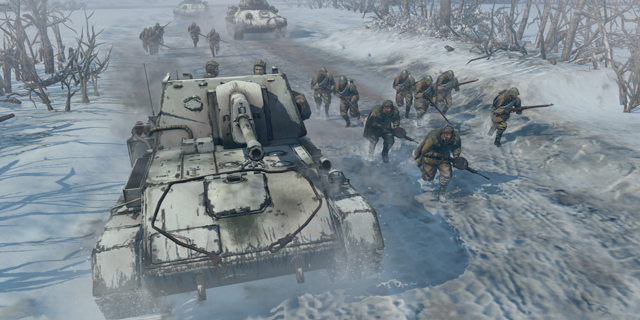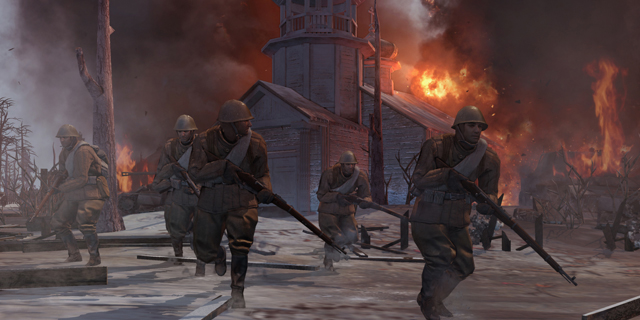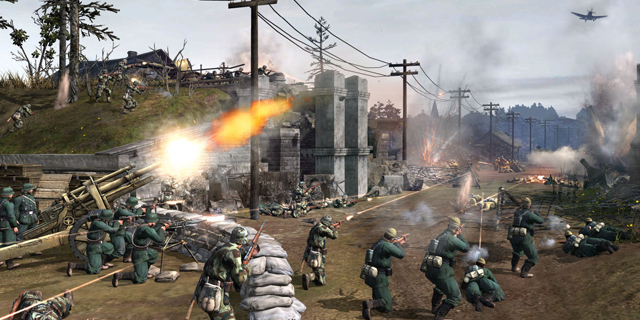
World War II has long been a well-harvested setting for games, though surprisingly few real-time strategy games have appeared among the innumerable first-person shooters, given the nature of the conflict. For a time, World War II games were widely regarded as overdone and uninteresting; the industry simply went to the well far too often, and games started to feel too similar.
In Company of Heroes 2, you command the Soviet Red Army, and are of course, fighting Nazi Germany. Unlike the first game, the game reflects the fact that the fighting in the Eastern Front was on a larger scale. Individual troops don’t carry as much value, and generating more troops is easier. Tanks are more important, yet not as strong, to reflect the heavy use (and heavy loss) of tanks during the fight between these two sides.

The biggest change is to missions in snowy areas. The weather has a big effect on troop strength, and you will need to react to its changes by moving into shelter or keeping troops near campfires to maintain them. Historically, the Russian winter was an important factor that led to the outcome on the Eastern Front, and this is reflected in the game. While it fits the setting, I did find the snow to be rather awkward to deal with, often requiring constant management of troops that aren’t currently in combat.
The game offers a single-player campaign, which doesn’t really stand out all that much in the grand scheme of things. The first thing you notice about the story is that there’s no “good” guy. The Soviet Union may have been fighting on the side of the Allies, but it fought for its own survival, and then its own gain. Without delving too far into the history books, the campaign shows that both sides are fighting for their own ruthless dictator, as opposed to playing as the liberating British and American forces in the first game.
There are also a series of challenges designed to test the player’s skill in a series of difficult situations, often with limited resources. These offer situations and skills that are useful when playing online. One aspect of both the campaign and challenge modes is that, while neither feel like a full tutorial, they serve to train the player for online play.

There’s also a co-op mode, designed to be played against the AI. This fits alongside single-player challenges, though unlike many RTS games, it is more involved than simply playing a skirmish against computer-controlled players. While I did not have the chance to test it out, it continues to prepare the player for multiplayer battles, introducing elements of online play without having to contend with a human opponent.
Company of Heroes 2 has a solid matchmaking system, and I experienced no lag while using it. All of the different pieces shown throughout the campaign and the challenges tend to meet when you go online, and a game between evenly-skilled players can be great fun.
Another first for the RTS is built-in streaming. The game’s main menu shows links to Twitch streams of the game, and allows you to stream your matches with little effort. Players new to the idea of streaming will find the built-in system easy to use, and it offers an in-game stream interface, allowing players to see how many viewers they have without needing a separate window. Streamers used to third-party streaming software will likely find many features missing, and may just want to continue the way they already know.
At its core, Company of Heroes 2 doesn’t offer immense changes over the original, but also doesn’t really break what was great about its predecessor. A lot of the mechanics changes make the game fresh again, even if it won’t change many minds about the original’s core formula.
Pros: Lots of gameplay changes that fit the new setting
Cons: Snow effects get a bit tedious



















